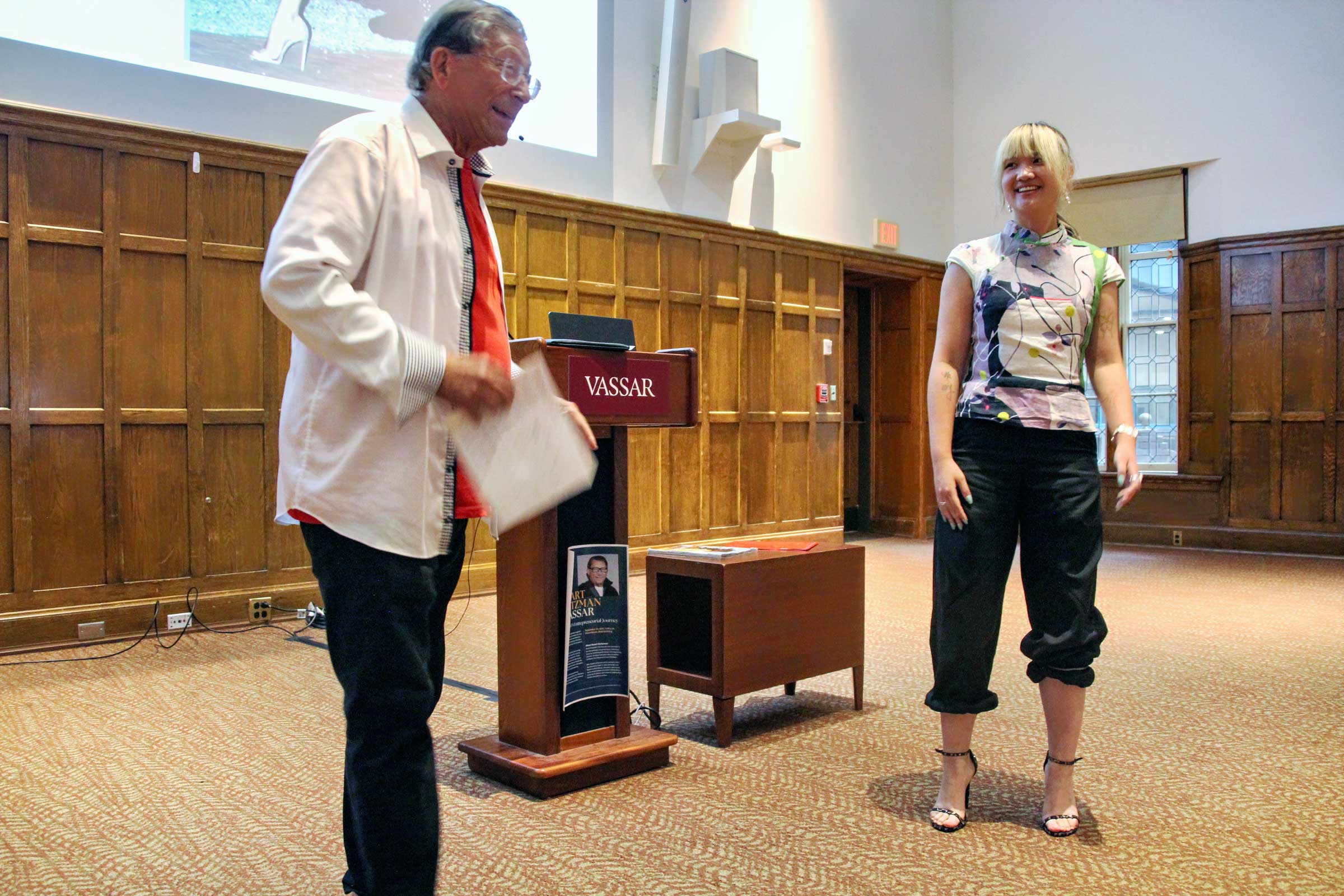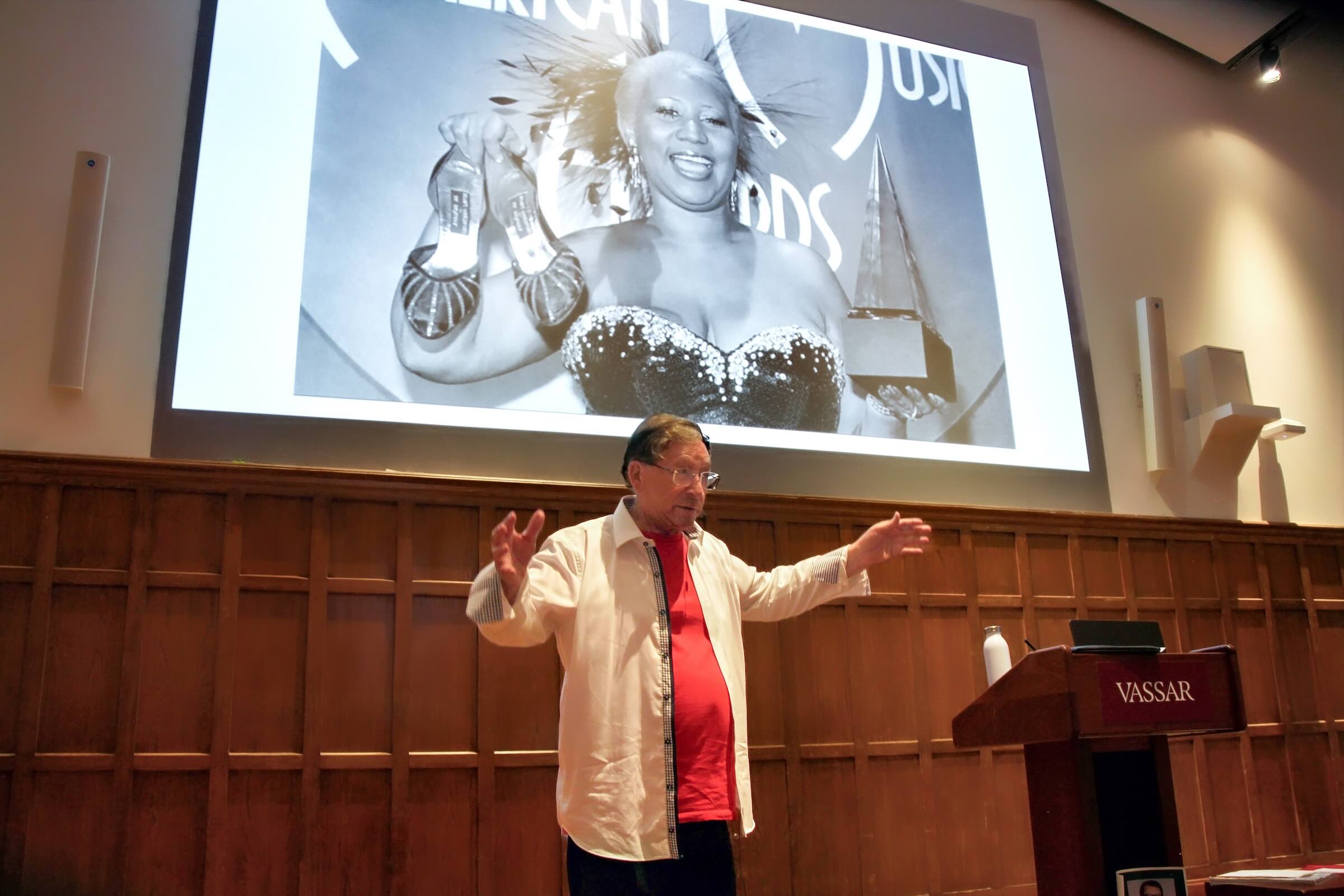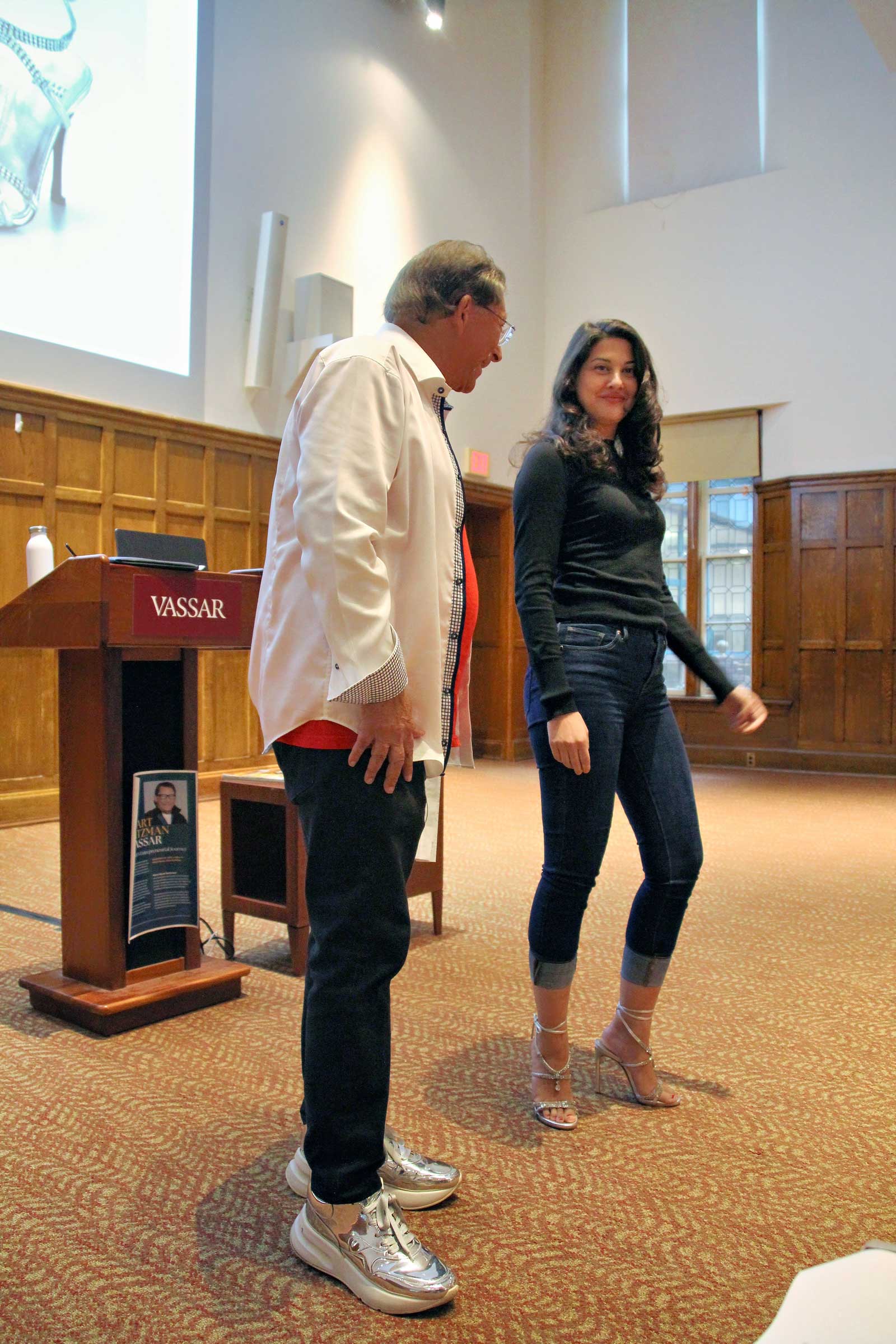Renowned Designer Stuart Weitzman Details His Entrepreneurial Journey During Vassar Visit
Students interested in fashion, entrepreneurship, and sweet kicks got an inside look at what it takes to make it in the apparel industry from luxury shoe designer Stuart Weitzman, who gave a talk in the Villard Room on September 25. Weitzman is the founder of the world-famous shoe brand that shares his name, which he started in 1986. After his company was acquired by Coach in 2015, Weitzman retired and now focuses on inspiring and leading the next generation of entrepreneurs and fashion designers.

The lecture, titled “A Designer’s Entrepreneurial Journey on the Road Less Traveled,” detailed Weitzman’s humble beginnings to designing shoes for high-profile clients such as Beyoncé and Taylor Swift, and the pieces of advice or “truisms” he picked up along the way. “If you don’t take risks, you don’t move forward,” Weitzman said, talking about the risk he took when he decided to leave his first job after college. “I knew I had to have some sort of niche in the fashion world. I noticed that on the red carpet, every actress had a different dress, but so many of them had the same shoes. No one was wearing custom shoes.” Weitzman then emphasized the importance of imagination and inspiration, showcasing visuals from his 2002 ad campaign that displayed outlines of high heels in everyday objects, such as dalmatians and jack-o'-lanterns. The campaign went on to win a Clio Award, marking the first time a shoe company had won the award. Weitzman detailed how he took inspiration from unlikely places, such as using Julia Roberts’s fashion in the film Pretty Woman to create the perfect modern thigh-high boot.

Weitzman also explained the importance of giving back to your community and how no one in the fashion industry can do it alone. “You have to have a great team. A team that loves it as much as you do,” Weitzman said, as he gestured to his VP and colleague Barbara Kreger, sitting in the audience. Weitzman recalled “Bid for the Cure,” a fundraising campaign for breast cancer that he helmed, which involved auctioning off celebrity-designed shoes for millions of dollars. He then showed pictures of the shoes that Tom Hanks and Oprah Winfrey designed for the campaign.
Weitzman, while rocking a pair of silver-colored sneakers, also invited members of the audience to “walk the runway” wearing shoes he had designed. As Amanda Goodman, Director of Administrative Affairs in the Office of the President, walked down the aisle of the Villard Room wearing a pair of diamond-encrusted high heels, Weitzman recounted how he had designed the very same shoes to be worn by actress Laura Harring at the 2002 Academy Awards, as part of a “marketing ploy for the brand.” The heels were valued at $1 million.

Weitzman’s attitude: “Why can’t we make a shoe so expensive that no one can ignore it?”
The designer ended his talk by sharing how he proposed to his spouse with a pair of specially designed shoes that had the words “Made expressly for Mrs. Stuart Weitzman” written on the inside of the heel. He then took questions from students and interacted with the audience.
“I really loved the lecture–I think he gave some great insights and stories regarding how one should approach building their own business,” said Ambica Kale ’26. “I think the most relevant example is ‘Before you build something yourself, work somewhere else first.’ Whatever that industry may be–work for someone else first, because the mistakes that the company makes will not directly affect your business, but you’ll be able to acquire a wealth of knowledge from it.”
Weitzman’s visit was co-sponsored by the Center for Career Education, Contrast (Vassar’s fashion magazine), Vassar Business Club, and the Vassar Innovation and Entrepreneurship Program.